Ivan Čuk
Editorial
Mauricio Santos Oliveira, Marco Antonio Coelho Bortoleto
PUBLIC SPORTS POLICY: THE IMPACT OF THE ATHLETE SCHOLARSHIP PROGRAM ON BRAZILIAN MEN’S ARTISTIC GYMNASTICS
Lurdes Ávila-Carvalho, Panagiota Klentrou, Maria da Luz Palomero, Eunice Lebre
BODY COMPOSITION PROFILE OF ELITE GROUP RHYTHMIC GYMNASTS
Olivia Donti, Kalliopi Theodorakou, Spiros Kambiotis, Anstasia Donti
SELF-ESTEEM AND TRAIT ANXIETY IN GIRLS PRACTICING COMPETITIVE AND RECREATIONAL GYMNASTICS
Kamenka Živčić Marković, Ines Čavar, Goran Sporiš
CHANGES IN GYMNASTS MOTOR ABILITIES DURING THE NINE MONTH TRAINING PROCESS OF FEMALE GYMNASTS 5-6 YEARS OF AGE
Despoina Τsopani, George Dallas, Niki Tasika, Amalia Tinto
THE EFFECT OF DIFFERENT TEACHING SYSTEMS IN LEARNING RHYTHMIC GYMNASTICS APPARATUS
Thomas Heinen, Pia M. Vinken, Konstantinos Velentzas
JUDGING PERFORMANCE IN GYMNASTICS:A MATTER OF MOTOR OR VISUAL EXPERIENCE?
Ivan Čuk, Hardy Fink, Bojan Leskošek
MODELING THE FINAL SCORE IN ARTISTIC GYMNASTICS BY DIFFERENT WEIGHTS OF DIFFICULTY AND EXECUTION
Ivan Čuk
Editorial
Dear friends,
SCGYM_4_1_2012_whole Journal.pdf
We are entering into the fourth year of publishing Science of Gymnastics Journal. Year 2011 was successful as we published 16 articles. Articles were written by authors from Brazilia, Portugal, Serbia, Greece, Unitade States of America, Australia, Croatia, Bosnia and Herzegovina, Germany, Austria, United Kingdom, Belgium and Slovenia, all together from 13 countries.
We were entered into the ProQuest data base, we are still testing SchoolarOne Manuscript Software, and we have a new editorial board member – Koichi Endo from Japan. From last October issue we have to apologize to the authors Luísa Amaral, José Ferreirinha,Paulo Santos and Albrecht Claessens as we did some errors in article design; you can find corrected article on our web pages.
The February issue we start with the article from sport management. Mauricio Santos Oliveira and Marco Antonio Bortoleto analyzed impact of Brazilian State support to results of gymnasts. For gymnastics developing countries the experience of Brazilians can be of a high value as they have excellent gymnasts. It is worth to note between 5th and 6th October 2012 in Rio Claro (Sao Paulo State University, Brasilia) will be organized 3rd International Seminar on Artistic and Rhythmic Competitive Gymnastics. In 2010 the seminar was of a high quality with many international experts including Keith Russell, FIG Scientific Commission president.
The second article is from Lurdes Ávila-Carvalho (Portugal), Panagiota Klentrou (Canada), Maria da Luz Palomero (Spain) and Eunice Lebre (Portugal) and analysis morphologic characteristics of rhytmic gymnast’s. International team detected changes in the past few years towards more healty body posture of womens involved in rhytmics.
The third article comes from Greece. Authors Olivia Donti, Kalliopi Theodorakou, Spiros Kambiotis and Anstasia Donti prepared article with title Self-esteem and Trait Anxiety in Girls Practicing Competitive and Recreational Gymnastics Sports, and found important facts for artistic gymnastics coaches to deal with anxiety.
The fourth article is from Croatia, Kamenka Živčić Marković, Ines Čavar and Goran Sporiš were monitoring 5-6 years old girls - gymnasts for nine months how they developed under their gymnastics program. It is worth to look at the figures with development curves as they are non linear and make us to think more about the development pathways.
The fifth article deals with rhythmic gymnastics and motor learning. Greek authors DespoinaΤsopani, George Dallas, N. Tasika, A. Tinto write how is more effective learning of rhythmic gymnastics for novice adult physical education students. Worth to read and re-think about our rhythmic and gymnastics programs at Universities.
The sixth and the seventh article are dealing with Code of Points. German authors Thomas Heinen, Pia M. Vinken and Konstantinos Velentzas were exploring how laypeople and expert judges evaluate gymnasts’ performance. It seems they can both well evaluate the gymnasts’ performance. Perhaps the Code of Points is not too complex? Slovenian - Canadian authors Ivan Čuk, Hardy Fink and Bojan Leskošek analyzed the impact of different ways of calculating final score (difficulty and execution) on ranking. With more weight on execution, ranking would be very changed; different gymnasts would enter into finals, but Code of Points most important statement - the gymnast must include in his exercise only elements that he can perform with complete safety and with a high degree of aesthetic and technical mastery would became effective. I wish you pleasant reading and a lot of inspiration.
Mauricio Santos Oliveira, Marco Antonio Coelho Bortoleto
PUBLIC SPORTS POLICY: THE IMPACT OF THE ATHLETE SCHOLARSHIP PROGRAM ON BRAZILIAN MEN’S ARTISTIC GYMNASTICS
The Brazilian government established the Athlete ScholarshipProgram, by Law no10.891/2004, aiming to contribute for athletes’ economical support, development and permanence in sports and to renew the Brazilian representation in national and international competitive events. This study intends to present the program and to discuss its impact on Brazilian Men’s Artistic Gymnastics (MAG) according to the opinion of Brazilian experts. A bibliographic review has been used as methodological procedure, followed by a field survey consisting of semi-structured interviews applied to Brazilian representatives, coaches, judges and world-class gymnasts. The results revealed the important role of the Athlete Scholarship Program on the gymnasts support, however other actions are necessary to solve structural and financial problems that still affect this sport in Brazil. We suggest some changes in the program in order to increase the number of scholarships offered, to minimize the bureaucracy application and to make clearer the enrollment rules, the accountability and the selection process.
Keywords: sports public funding, sports policy, sports legislation.
Lurdes Ávila-Carvalho, Panagiota Klentrou, Maria da Luz Palomero, Eunice Lebre
BODY COMPOSITION PROFILE OF ELITE GROUP RHYTHMIC GYMNASTS
The aim of this study was to analyze the anthropometric characteristics, training experience, body composition and biological maturity of Elite group gymnasts. 84 RG group gymnasts from the 2009 and 2010 World Cup were evaluated. Body Mass Index (BMI) was calculated using standard procedures. Relative body fat (%BF), fat mass and lean body mass were estimated from skinfold thickness, and waist/hip circumferences were measured. Biological maturity was determined by the age at menarche. An increase on the age of the gymnasts participating in high level competitions seems to affect the new body appearance profile. Gymnasts are taller and with higher body mass than in the past. BMI were at the normal range whatever the success in competition. The more successful gymnasts had lower values of %BF but still higher than what have been reported in RG studies. A relation between the body composition data and the results has been not found. The higher level gymnasts had begun activity in RG earlier, and had more years of practice, and higher training volume. All gymnasts had a late menarche.We think that the initial selection of gymnasts who had late maturate can influence their body appearance when they become adults.
Keywords: rhythmic gymnastics groups, body composition, profile, ranking.
Olivia Donti, Kalliopi Theodorakou, Spiros Kambiotis, Anstasia Donti
SELF-ESTEEM AND TRAIT ANXIETY IN GIRLS PRACTICING COMPETITIVE AND RECREATIONAL GYMNASTICS
The purpose of this study was to examine self-esteem and trait anxiety in 161 girls, 10-12 years old, practising competitive and recreational gymnastics sports. To measure self-esteem and trait anxiety, the Greek versions of Harter’s Self-Perception Profile for Children (1985a) and of the State-Trait Anxiety for Children (STAIC; Spielberger, Edwards, Lushene, Montuori, & Platzek, 1973) were used respectively. A MANOVA and an independent samples t-test were performed in order to examine differences in self-esteem and trait anxiety between the two groups of gymnasts respectively. Results indicated that there was no significant difference between competitive and recreational gymnasts in self-esteem except for the subscales of scholastic competence, and social acceptance, which had lower values for the competitive girls. However, girls participating in competitive gymnastics sports had significantly higher values of trait anxiety compared to girls practising recreational gymnastics sports. Further research is required on the impact of competitive sport effect on gymnasts’ psychological parameters.
Keywords: trait anxiety; self-esteem; gymnastics, girlsKamenka Živčić Marković, Ines Čavar, Goran Sporiš
CHANGES IN GYMNASTS MOTOR ABILITIES DURING THE NINE MONTH TRAINING PROCESS OF FEMALE GYMNASTS 5-6 YEARS OF AGE
This study was aimed to determine changes in the development of some motor abilities of female gymnasts aged 5-6 years during the nine-month training process. Six gymnasts, members of gymnasts club „Novi Zagreb“from Zagreb aged from 5 - 6 years, volunteered in this study. They were involved in the training process, which was consistent of the elements of “B” (higher level) program for girls, for nine months. Changes in motor variables were recorded in the 7 time points for each subject. One way ANOVA for repeated measures determined if changes in measured motor abilities would appear through nine month training process. The primarily finding of this study supported our research hypothesis, with statistically significant improvement in all of measured motor abilities (power and flexibility), except in explosive power.
Keywords: power, flexibility, training, development
Despoina Τsopani, George Dallas, Niki Tasika, Amalia Tinto
THE EFFECT OF DIFFERENT TEACHING SYSTEMS IN LEARNING RHYTHMIC GYMNASTICS APPARATUS
The purpose of this study was to examine which of the two teaching systems, the Current Teaching System (CTS) and the Serial Organization System (SOS), is more effective in the learning rhythmic gymnastics skills in this novice (basic) level of students. The sample that consisted of 84 novices female students of physical education of Athens, aged 18-20 years old (19.02±0.77) who volunteered to participate in this study separated in two groups (n1=39, n2=43). At first, a pre test wad done to ascertain the initial level of performance and a post test after the end of practice in order to assess the effectiveness of these two teaching methods. All the experimental skills were evaluated by two teachers of University who were also official judges in the sport of Rhythmic Gymnastics. All participants took place in a nine weeks intervention program, 2 times per week for 90 minutes in each session (teaching unit). According to the results, although there was not a group effect in the pre test in each apparatus (p>.05), in the post test there was significant group effect in the total number of examined skills (p<.05). Further, there was a significant group effect between the two measurements in the total number of skills in each apparatus of ribbon (p<.05), rope and clubs (p<.001). Furthermore, it has to be stressed that the SOS had higher scores in the majority of examined skills in post test. Conclusively, SOS is more effective than CTS in case of learning Rhythmic Gymnastics skills according to the position of body and apparatus, especially in these cases where the parameters of implementation of exercise are not altered.
Keywords: Rhythmic Gymnastics- motor skills- learning.
Thomas Heinen, Pia M. Vinken, Konstantinos Velentzas
JUDGING PERFORMANCE IN GYMNASTICS:A MATTER OF MOTOR OR VISUAL EXPERIENCE?
We addressed the question if laypeople with motor experience in gymnastics evaluate gymnastic performance similar to judges with only visual experience in the same domain. In addition we sought to explore the (biomechanical) sources of information that may account for the evaluation of gymnastics skills. We predict that laypeople rate handsprings on vault similar as expert judges and that gymnastics judges’ scores are related to time-discrete kinematic characteristics whereas laypeople’s scores are related to the form-aspect of the skill. 23 gymnastics judges and 23 laypeople rated handsprings on vault. Laypeoples’ scores were in average lower than gymnastics judges’ scores when judging handsprings. Laypeoples’ scores were predicted well by time-continuous kinematic parameters whereas judges’ scores were predicted well by time-discrete characteristics of the handsprings. We conclude, that judging in gymnastics can be facilitated by either own motor experience or specific visual experience.
Keywords: handspring, kinematic analysis, judges, laypeople.
Ivan Čuk, Hardy Fink, Bojan Leskošek
MODELING THE FINAL SCORE IN ARTISTIC GYMNASTICS BY DIFFERENT WEIGHTS OF DIFFICULTY AND EXECUTION
The aim of this research is to investigate how different calculations of the final score may change the ranking orders among gymnasts. Fourteen different calculations were taken into consideration and then compared with official results from the 2011 Men's European Championships in Berlin. The proportion between difficulty and execution scores, according to different formulas, can range from 17% to 67%. With the different proportions in the final score calculations the number of changes in rankings is high: in C1 81%, in CII 61% and in CIII 35%. The formula D score + Sum (Middle four E scores) and formula D score + Sum (Middle three E scores) have the highest impact on the changes of qualifiers towards competitions CII and CIII. The above mentioned two formulas also specifically support the Men’s Code of Points (articles 15 and 20) which state that gymnast is expected to include in his exercise only elements that he can perform with complete safety and with a high degree of aesthetic and technical mastery.
Whole article in pdfKeywords: ranking, gymnasts, finals, qualifiers.





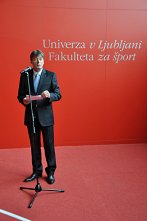


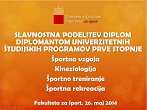
















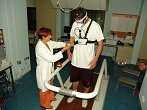
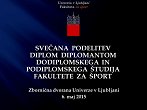
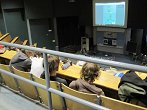
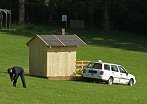

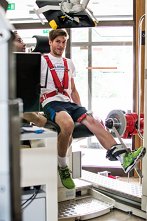



.png)